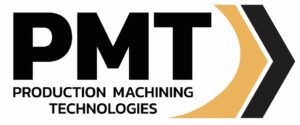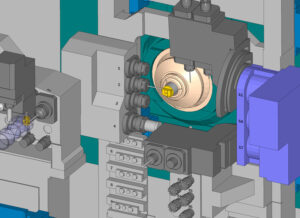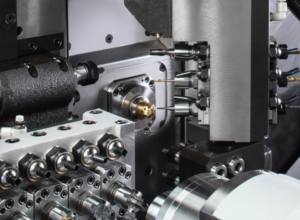Direct Energy Deposition (DED) is an advanced and versatile additive manufacturing technique that enables the creation, repair, and enhancement of high-quality metal parts. This process simultaneously depositing and melting material to form solid structures. Unlike traditional subtractive manufacturing methods, which involve cutting away material from a solid block, DED adds material layer by layer.
This method allows for exceptional control over the material placement and properties. DED is ideal for applications that require intricate geometries and high performance. DED is particularly advantageous for producing components with complex internal structures or varying material compositions, which are often challenging to achieve with conventional manufacturing techniques.
The origins of DED can be traced back to the development of techniques such as laser cladding and welding, which have evolved to accommodate the demands of modern additive manufacturing. Today, DED is recognized for its ability to repair expensive and critical components, thus extending their service life and reducing costs. This technology is widely used in industries such as aerospace, automotive, medical, and tooling, where precision, durability, and material efficiency are paramount.
How does DED work?
The DED process involves several key components and steps that work together to produce high-quality parts. Here’s a more detailed look at how DED systems operate:
-
- Material Delivery: DED systems use a variety of “feedstock” materials--the material being deposited onto the part). These include metal powders, metal wires, and even ceramic powders in some applications. The choice of material depends on the specific requirements of the part being produced. The feedstock material is delivered to the deposition area through a nozzle, which ensures a steady and controlled flow.
- Energy Source: A focused energy source, such as a laser, electron beam, or plasma arc, is used to melt the feedstock material as it is deposited. Each type of energy source has its advantages:
- Laser: Provides high precision and control, making it suitable for detailed and complex parts.
- Electron Beam: Offers deep penetration and is effective for thicker materials or parts requiring high energy input.
- Plasma Arc: Delivers high temperatures and is useful for depositing materials with high melting points.
- Deposition and Melting: As the feedstock material exits the nozzle, it is immediately melted by the energy source. This simultaneous deposition and melting process ensures that the material fuses seamlessly with the substrate or previously deposited layers. The energy source and nozzle move in a coordinated manner, guided by a computer-controlled system, typically based on CAD models. This precise control enables the creation of complex shapes and structures.
- Layer-by-Layer Building: The DED system deposits material in successive layers, each one melting and bonding to the layer below it. This layering approach allows for the creation of parts with intricate internal features and varying wall thicknesses. The process continues until the entire part is built up from the bottom layer to the top.
- Post-Processing: After the part is fully built, it may require post-processing to achieve the desired surface finish and dimensional accuracy. This post-processing work can include machining, grinding, or polishing to remove any surface irregularities and ensure that the part meets strict quality standards.
- Applications in Repair and New Manufacturing: DED is not only used for creating new parts but is also highly effective for repairing and enhancing existing components. For example, worn or damaged turbine blades in the aerospace industry can be restored to their original specifications, saving significant costs compared to manufacturing new parts. Additionally, DED can add wear-resistant coatings to improve the durability of critical components.
The ability to precisely control the deposition and properties of materials makes DED an invaluable tool in modern manufacturing. It provides manufacturers with the flexibility to produce highly customized parts, optimize material usage, and enhance the performance of their products. Whether for creating entirely new components or extending the life of existing ones, DED technology continues to push the boundaries of what is possible in additive manufacturing.
Applications of Direct Energy Deposition (DED)
Direct Energy Deposition (DED) is a crucial tool in industries where component repair and high-performance part manufacturing are essential. Here are some of the most common and impactful applications of DED:
- Aerospace:
- Repairing Turbine Blades: In the aerospace industry, turbine blades in jet engines are subject to extreme conditions and wear. DED is used to repair these high-value components by adding material to worn or damaged areas, restoring their original dimensions and properties. This not only extends the lifespan of the blades but also ensures the engine operates efficiently and safely.
- Creating Complex Engine Components: DED allows for the fabrication of intricate engine components that require precise geometries and material properties. This is particularly important for parts that need to withstand high temperatures and mechanical stress. The ability to customize and optimize these components can lead to improvements in engine performance and fuel efficiency.
- Automotive:
- Manufacturing High-Stress Components: The automotive industry benefits from DED by using it to produce parts that must endure significant mechanical loads and harsh operating conditions. Transmission gears, for example, require high precision and strength. DED enables the creation of these gears with tailored material properties, enhancing their durability and performance.
- Repairing Engine Parts: DED is also used to repair engine components such as cylinder heads and crankshafts. These parts can be expensive to replace, but with DED, material can be added to worn areas, restoring them to their original specifications and saving costs.
- Medical:
- Producing Custom Implants: The medical field requires highly precise and biocompatible parts, such as implants and prosthetics. DED technology enables the production of custom implants tailored to the specific needs of individual patients. For instance, DED can be used to create hip and knee replacements with precise geometries that fit perfectly and promote better integration with the patient’s body.
- Creating Surgical Tools: DED is also used to manufacture complex surgical tools and instruments that require intricate designs and high precision. This ensures that the tools perform reliably during surgical procedures.
- Tool and Die:
- Repairing Tooling Equipment: In the tool and die industry, molds, dies, and other tooling equipment are subject to wear and tear due to repeated use. DED provides an efficient solution for repairing these expensive tools by adding material to worn areas, thereby restoring their functionality and extending their service life.
- Enhancing Lifespan: By applying wear-resistant coatings through DED, the durability of tooling equipment can be significantly enhanced. This not only improves the lifespan of the tools but also reduces downtime and maintenance costs.
- Energy Sector: DED is used in the energy sector for repairing and fabricating components in power plants, including gas turbines and nuclear reactor parts. The ability to quickly repair critical components helps in maintaining the reliability and efficiency of energy production systems.
- Defense: The defense industry utilizes DED for producing and repairing military equipment and vehicle parts. The technology’s capability to handle high-strength materials and produce parts with complex geometries is particularly valuable in this field.
- Research and Development: DED is a powerful tool for prototyping and testing new materials and designs. Researchers can quickly produce and evaluate components, accelerating the development of new technologies and products.
The Future of DED Applications
As DED technology continues to advance, its applications are expected to expand even further. Innovations in material science, process control, and system integration are likely to enhance the capabilities of DED, making it an even more indispensable tool across various industries. For instance, the development of new alloy compositions and hybrid manufacturing techniques could open up new possibilities for DED, allowing for the production of parts with unprecedented performance characteristics.
Challenges and Considerations
While Direct Energy Deposition (DED) offers numerous advantages, there are several challenges to consider. One of the primary challenges is the high cost of DED equipment. These systems, which include advanced lasers, electron beams, and plasma arcs, can be expensive to purchase and maintain. The initial investment and ongoing maintenance costs can be significant, particularly for smaller businesses. Additionally, the complexity of DED technology means that operators require specialized training to handle the equipment effectively and optimize the manufacturing process. This need for highly skilled personnel can present a barrier to adoption, as it involves additional costs for training and potentially higher wages for skilled operators.
Another critical consideration is the surface finish of parts produced by DED. While DED is excellent for creating intricate geometries and repairing components, the parts may often require additional post-processing to achieve the desired surface finish and dimensional accuracy. Processes such as machining, grinding, or polishing are typically necessary to remove surface roughness and ensure that the parts meet stringent quality standards. This additional step can increase production time and costs, offsetting some of the efficiency gains provided by DED. Moreover, achieving consistent material properties and avoiding defects such as porosity or residual stresses can be challenging and require careful control of process parameters. Despite these challenges, the benefits of DED make it a valuable tool in modern manufacturing, provided that these considerations are managed effectively.
PM Technologies and ESPRIT CAM with Additive DED
At PM Technologies, we provide comprehensive support and training for ESPRIT CAM's Additive DED system. ESPRIT CAM integrates seamlessly with DED processes, offering advanced features for programming and controlling additive manufacturing operations. Our expertise ensures that clients can fully leverage the capabilities of their DED systems for optimal performance and efficiency.
Frequently Asked Questions (FAQs)
Direct Energy Deposition (DED) is an advanced additive manufacturing technique that builds or repairs high-quality metal parts by depositing and simultaneously melting material. This process allows for precise control over the material's placement and properties, making it ideal for producing complex geometries and high-performance components.
Unlike traditional subtractive manufacturing, which involves cutting away material from a solid block, DED adds material layer by layer. This additive approach allows for greater flexibility in creating intricate internal structures and varying material compositions, which are often difficult to achieve with conventional techniques.
DED systems can use a variety of materials, including metal powders, metal wires, and ceramics. The choice of material depends on the specific requirements of the part being produced, such as the desired mechanical properties and the operating environment.
A DED system typically consists of a material delivery mechanism (nozzle), a focused energy source (laser, electron beam, or plasma arc), and a computer-controlled system for precise deposition. These components work together to deposit and melt material, creating solid layers that form the final part.
DED is used in various industries, including:
- Aerospace: Repairing turbine blades and creating complex engine components.
- Automotive: Manufacturing and repairing high-stress components like transmission gears and engine parts.
- Medical: Producing custom implants and prosthetics with high precision.
- Tool and Die: Repairing and enhancing the lifespan of expensive tooling equipment.
- Energy: Repairing and fabricating components in power plants.
- Defense: Producing and repairing military equipment and vehicle parts.
- Research and Development: Prototyping and testing new materials and designs.
DED offers several advantages, including high precision, material efficiency, versatility in material selection, and the ability to repair existing parts. It allows manufacturers to produce highly customized parts and optimize material usage, enhancing overall performance and reducing waste.
Key challenges include the high cost of equipment, the need for specialized training, and the requirement for post-processing to achieve the desired surface finish. Additionally, maintaining consistent material properties and avoiding defects such as porosity or residual stresses can be challenging and require careful process control.
DED can significantly reduce costs by extending the service life of expensive components through repair, minimizing material waste, and enabling the production of parts with optimized designs that improve performance and reduce material usage.
PM Technologies provides comprehensive support and training for ESPRIT CAM's Additive DED system. ESPRIT CAM integrates seamlessly with DED processes, offering advanced features for programming and controlling additive manufacturing operations. Our expertise ensures that clients can fully leverage their DED systems' capabilities for optimal performance and efficiency.
As DED technology continues to advance, its applications are expected to expand further. Innovations in material science, process control, and system integration will enhance DED capabilities, making it an even more indispensable tool across various industries. The development of new alloy compositions and hybrid manufacturing techniques will open up new possibilities for producing parts with unprecedented performance characteristics.



